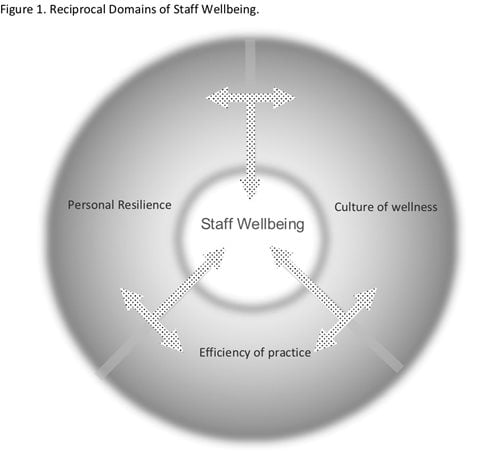“He who has a why (to live for) can bear almost any how.” Friedrich Nietzsche.
The importance of the wellbeing of emergency department staff is obvious to all who have worked in emergency departments. Experiential understanding is supported by a recent metanalyses which demonstrates that as well as being important for ourselves, our patients probably receive improved care from those who are not burnt out. (Pangioti, JAMA, 2018) We clearly have a “why”.
But what can be done to address workforce wellbeing? What factors are most important, what interventions may make a difference, what is actually doable, can these be measured? “How” can we improve our wellbeing for ourselves, our patients, and the health system overall?
Researchers, with support from the multidisciplinary Healthy Workplace Group (HWG) at Auckland City Hospital Adult Emergency Department, sought to identify baseline measures of wellbeing (the extent of the “why”) as well as identify what measures may improve wellbeing in their department (the potential “how”) for all workgroups. (read the EMA article online) Wellbeing was conceptualised as being influenced by personal resilience, culture of wellness, and workplace efficiency domains. (see figure, adapted from Bohman, NEJM catalyst, August 7 2017)
Despite personal burnout (measured using the Copenhagen Burnout Inventory) reaching 51% among nurses (30% for doctors, and 0% for cleaners), most staff found their work meaningful (81%), felt they had a good work-life balance (74%), and agreed their department was “an excellent place to work” (72%).
What matters most to staff is providing safe, high-quality care for their patients, and team work. Barriers to these included high workload, being understaffed and lack of support within teams and from management.
The HWG has adopted a quality improvement approach to address some of the survey findings. Initiatives include a nurse mentoring program, an information technology improvement program, a mindfulness meditation program, and a “hot” debrief project.
While we can’t do everything, there are things we can attempt to improve that may make a small but important difference
Rather than trying to improve everything, a key principle of quality improvement is identifying what is potentially controllable and focus on what is potentially doable. Another important principle is measuring the effects of interventions, something the research group is attempting.
I would encourage all members and trainees to get involved in their workplace wellbeing and staff support programs. Thinking and acting locally with a multidisciplinary team makes sense.

Background
Member Support and Wellbeing has been identified as one of the six strategic priorities that will guide College activities over the next three years.
The ACEM Strategic Plan 2019–2021: The Next Phase states that ACEM ‘represent and support members in their professional life in a manner that enables longevity of emergency medicine professionals and sustainability of the wider emergency medicine workforce’.
This will involve ACEM providing members and trainees with activities that contribute to their wellbeing, appropriate support to Faculties, peer networking opportunities, a formal mentoring program, support to meet regulatory requirements, and continued advocacy, policy and standards.
Get involved in Wellness Week 2019 #IEMwell19 and stay informed via the ACEM Wellbeing Network.